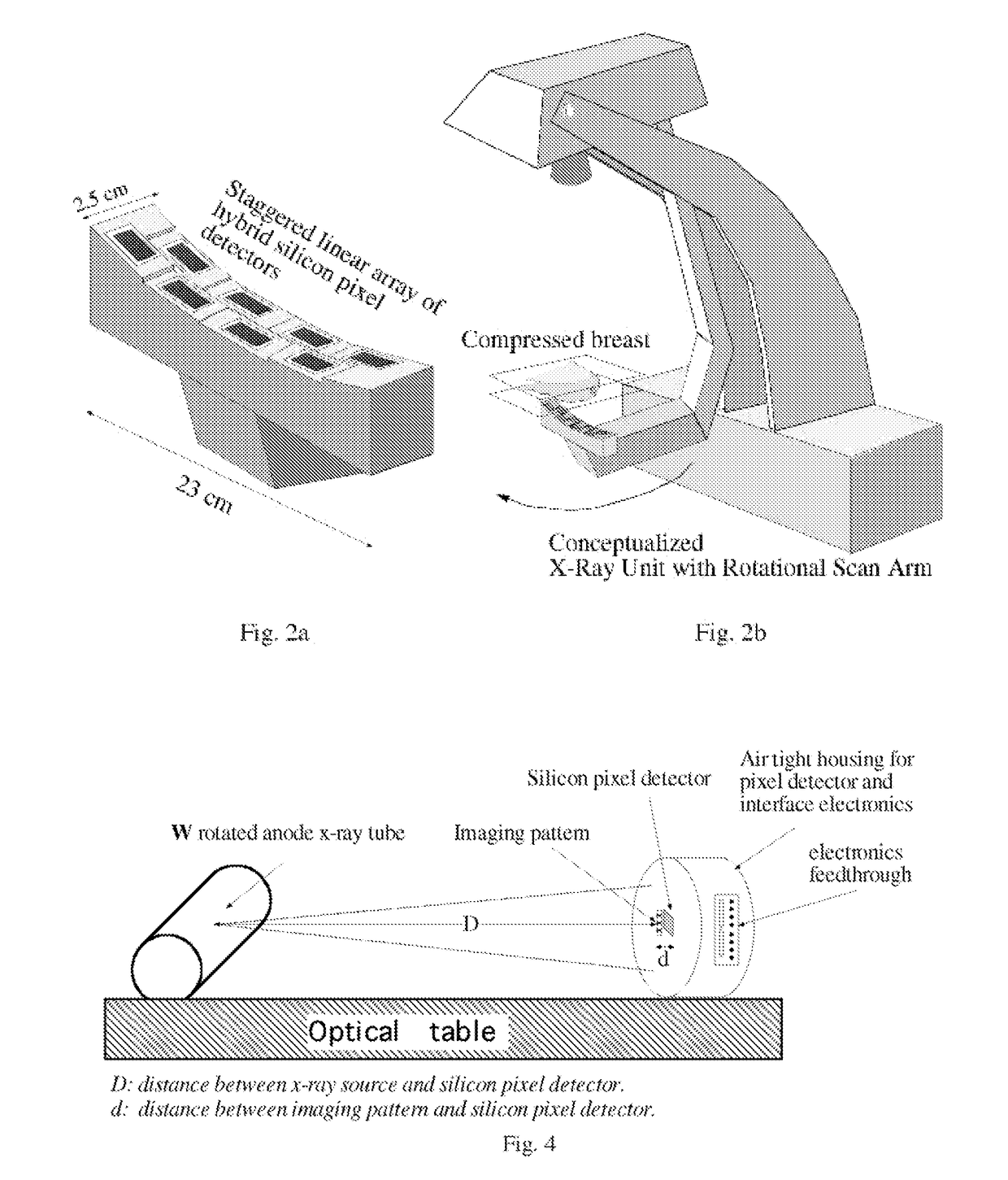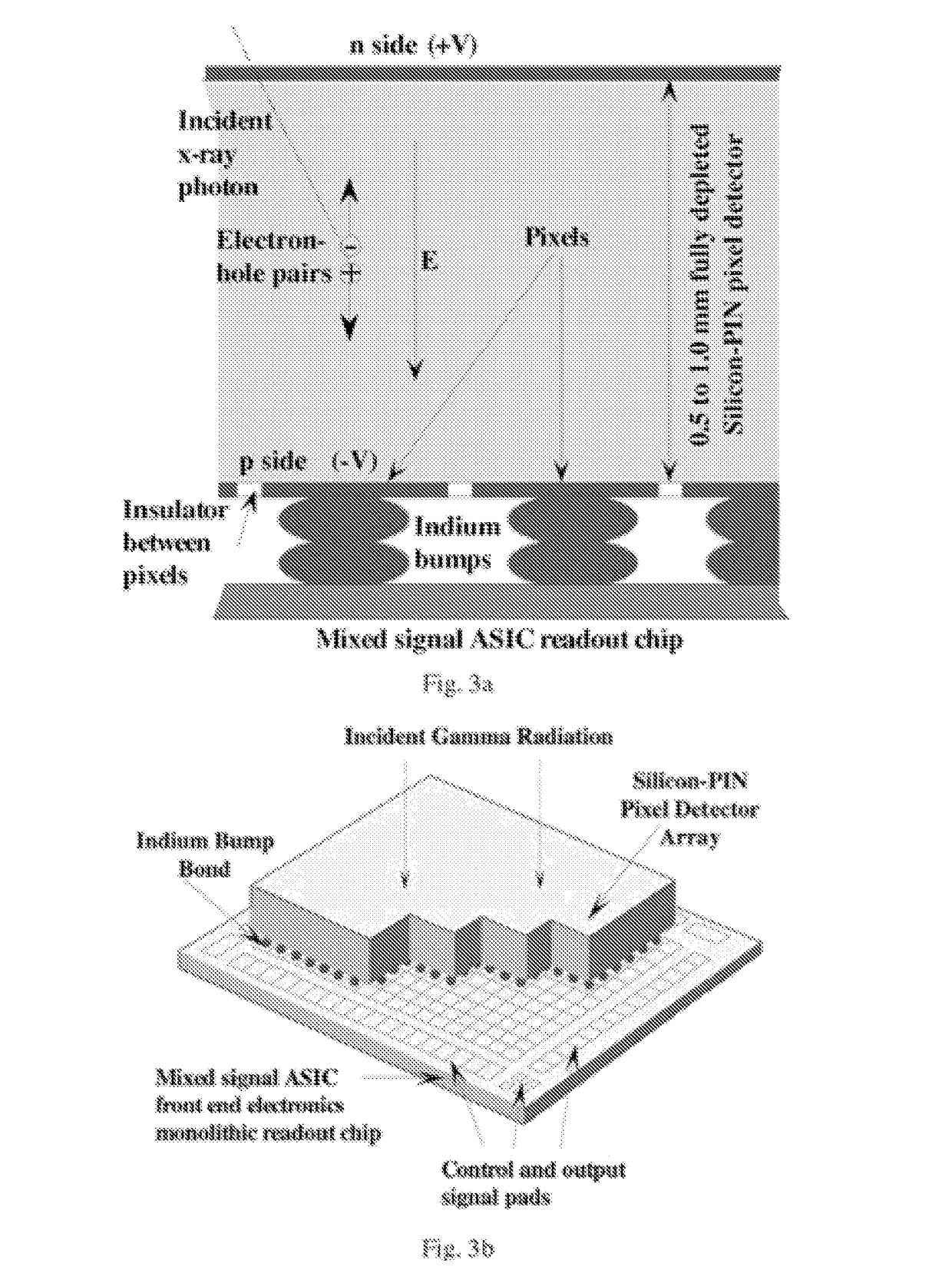High resoultion digital imaging apparatus
a digital imaging and high-resoultion technology, applied in the field of high-resoultion digital imaging apparatus, can solve the problems of increasing yield, reducing cost, and sensors still needing to be well calibrated, and achieves low noise detectors, small capacitance, and large thickness
- Summary
- Abstract
- Description
- Claims
- Application Information
AI Technical Summary
Benefits of technology
Problems solved by technology
Method used
Image
Examples
Embodiment Construction
Advantages of the Invention
[0051]The SiPDs have excellent properties which can lower the radiation dose, improve resolution and overcome the limitations of the present mammography systems. The digital mammography system of this invention using SiPDs provides the following advantages:[0052]1. High spatial resolution: A silicon pixel detector with pixel size of 44×44 micron2 or 50×50 micron2 is conservatively planned for the proposed prototype. Smaller pixel sizes to 25×25 micron2 with TDI capability may be feasible if necessary. This will allow high resolution fine detail imaging.[0053]2. Low-dose rate: The interaction probability of SiPDs can be reasonably high because the depletion region can be made thick. The proposed SiPDs have excellent photo-absorption efficiency for 15 to 25 kev x rays. The present technology can produce 1.5 mm thick pixel detectors, which give about 95%, 78% and 53% quantum efficiencies for x-ray energies of 15, 20 and 25 keV. Larger thickness pixel detector...
PUM
 Login to View More
Login to View More Abstract
Description
Claims
Application Information
 Login to View More
Login to View More - R&D
- Intellectual Property
- Life Sciences
- Materials
- Tech Scout
- Unparalleled Data Quality
- Higher Quality Content
- 60% Fewer Hallucinations
Browse by: Latest US Patents, China's latest patents, Technical Efficacy Thesaurus, Application Domain, Technology Topic, Popular Technical Reports.
© 2025 PatSnap. All rights reserved.Legal|Privacy policy|Modern Slavery Act Transparency Statement|Sitemap|About US| Contact US: help@patsnap.com



